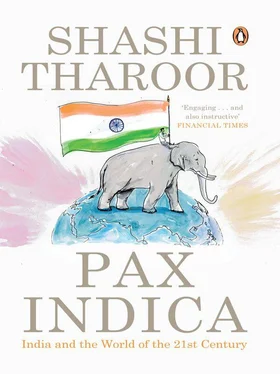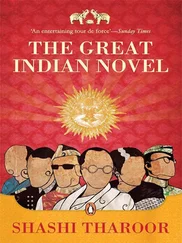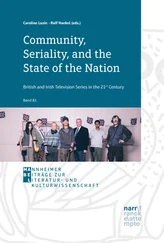A larger question is one of the extent of India’s responsibility, if any, to the well-being of its diaspora in their new homelands. While the government has indeed stood up (somewhat ineffectually) for the rights of oppressed Indians in Fiji and acted (with somewhat better results) on the media outcry over violence directed against Indians in Australia, it has not consistently been able to defend the rights of its citizens or PIOs abroad. New Delhi’s chronic reluctance to interfere in the internal affairs of sovereign states is an inhibiting factor; so also is the tension, for instance, between needing to maintain good political and economic relations with a country and seeking to protect the welfare of Indian workers in it, which has hamstrung India’s ability to protect pravasis in places as far apart as Uganda, Saudi Arabia, Malaysia and Fiji. This leaves New Delhi in the somewhat paradoxical position of not making the problems of NRIs a foreign policy priority, while treating their successes as a national achievement and seeking to benefit from their resources and remittances.

As this broad overview of what Germans might call India’s Weltanschauung suggests, India already bestrides the world in important ways, engages with it at several levels and has developed a stake in safeguarding and promoting interests that go beyond the strictly national. As it contemplates enhanced responsibilities across the globe in the twenty-first century, it fulfils one essential requirement: India is at home in the world.
Chapter Eleven ‘Multi-Alignment’: Towards a ‘Grand Strategy’ for India in the Twenty-first Century
When researching in 1977 the doctoral dissertation that became my first book, Reasons of State , I was told by a (then already retired) Indian diplomat that ‘Indian diplomacy is like the love-making of an elephant: it is conducted at a very high level, accompanied by much bellowing, and the results are not known for two years.’ Indian diplomacy has become somewhat sprightlier since those days, but the gentle indictment of a style of foreign policy-making that was widely considered to be long on rhetoric and short of hard-headed substance still echoes through the corridors of New Delhi’s South Block.
At the time, I lamented the low correlation between foreign policy as conceived and articulated by decision-makers and national interests in security and geopolitical terms. This point was obviously a rather contentious one. It was presumptuous of me, in my early twenties, to decry the lack, as I saw it, of a strategic vision on the part of India’s policy-makers beyond the bromides of non-alignment. I wrote passionately about the failure to define a conception of the Indian national interest in other than universalist-ideological terms — itself a manifestation, no doubt, of my academic over-reliance on public declarations and official statements, albeit supplemented by several astonishingly candid interviews (Mrs Gandhi’s government had just fallen in the elections of 1977 after her disastrous experiment with Emergency rule, and every one of her key advisers and foreign ministers was available and willing to talk freely, never expecting her to come back to power). India’s declaratory effulgences about non-alignment featured rather too many references to ‘peace’ and ‘friendship’ as cardinal motivations and attributes of foreign policy, which I argued were scarcely adequate substitutes for a clear conception of the nation’s specific goals in foreign policy, their realizability and the tasks to be performed in order to attain them. In Nehru’s time, I averred, the Sino-Indian war was the most dramatic, but not the only, demonstration of this failure; and yet just nine years later, India’s masterly handling of its foreign policy objectives in the 1971 Bangladesh crisis offered a convincing counternarrative.
My argument was all the more sustainable because of the widely prevalent view of Nehru’s foreign policy as a value in itself, as (in one Indian scholar’s formulation) an ‘imperative’ not to be judged by the ‘mundane criteria of success’. Indeed, after 1962, success was an inappropriate criterion to apply to Nehru’s foreign policy. As a global stratagem, non-alignment might initially have gained India some freedom of manoeuvre between the superpowers and brought it a prestige and influence out of proportion to India’s true strength, but it did not serve Nehru well in his hour of crisis. No wonder non-aligned scruples were quietly jettisoned by his own daughter in 1971, when realpolitik, rather than woolly declarations of non-aligned solidarity, was needed and pursued, and India rushed willingly into the Soviet embrace as a shield against a possible Pakistani — Chinese alliance. Though New Delhi proceeded gently to distance itself from Moscow thereafter (including concluding defence deals with France, the United States and the United Kingdom in the 1980s), the lingering effects of that embrace remained apparent in Indian policies on Cambodia and Afghanistan, and it was only with the end of the Cold War in 1991 that India once again became truly non-aligned — at a time when there no longer were two powers to be non-aligned between.
It should go without saying that every country needs a foreign policy that is linked to national interests concretely defined. To meet this test, the Indian government should have been able to develop and possess a view of the national interest in regional and international affairs, and to apply it in practice; the ‘national interest’, in this formulation, should be a concept transcending the mere enunciation of foreign policy principles. It is worthwhile to advocate peace and good neighbourliness as a national principle , for instance, but such advocacy becomes irrelevant if there is a belligerent army marching across one’s borders; national interests then demand capable military self-defence. This may seem self-evident, but the distinction has been blurred in less clear-cut situations over the years by the makers and articulators of India’s foreign policy. Indian diplomacy has often been seen by close observers as more concerned with principles than interests — a tendency that infects Indian negotiating strategies as well, making New Delhi less likely to compromise since principles are usually immutable while interests can be negotiable.
Even India’s diplomatic style, it has been suggested, often privileges intellect over interest and process over outcome. Our diplomats combine brilliance, hard work and flair with a talent for winning debates that can sometimes be counterproductive. David Malone has noted that Indian diplomats’ ‘perceived need to outflank all potential or actual rivals and impress all comers sometimes leads Indian practitioners to monopolize attention through rhetorical brilliance and to spend as much time on impressing the gallery as on tending effectively to Indian interests. The cleverest person in the room may win many arguments, but still not win the game.’ The tendency to get carried away by the sheer momentum of diplomatic argument, he suggests, leads ‘Indian officials, when in international forums … to pursue outcomes or adopt positions that are contrary to the objectives of Indian foreign policy set at the political level.’ This has led a sympathetic observer, Edward Luce, to suggest that ‘India is rising in spite of its diplomacy.’ Such a view may be harsher than justified, but it does suggest that a gentler and more accommodative tone should be developed that accords better with the demands of the multilateral high table at which India expects to be seated.
In defining the Indian national interest, there are fundamental domestic verities that foreign policy must either promote or at least not undermine: India’s liberal democracy; its religious, ethnic and cultural pluralism (a term I prefer to the more traditional Nehruvian ‘secularism’); and its overriding priority of pulling its people out of poverty and ensuring their economic well-being. These are as fundamental to our national interest as preserving an effective, well-trained and non-political military that will secure and protect our borders, as well as security forces that will deal with domestic sources of conflict, from misguided Maoists to secessionist insurgencies. If all of these elements and objectives constitute India’s core national interests, New Delhi must maintain the domestic structures and capacities to pursue them, as well as strive to ensure the shaping of a world order that permits, and ideally facilitates, their fulfilment.
Читать дальше













